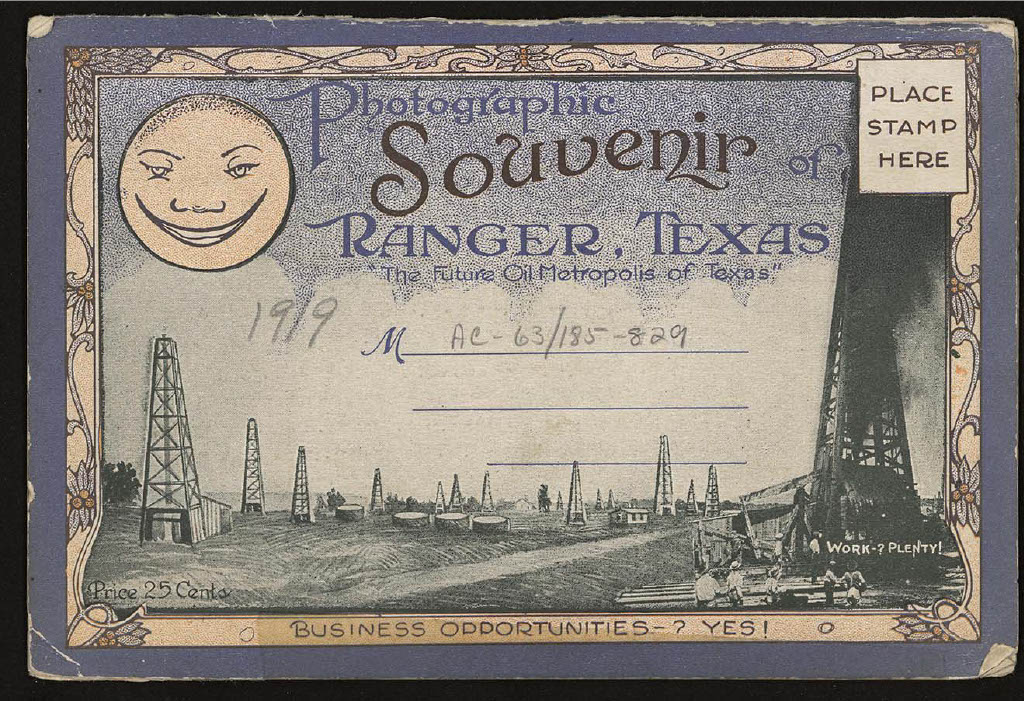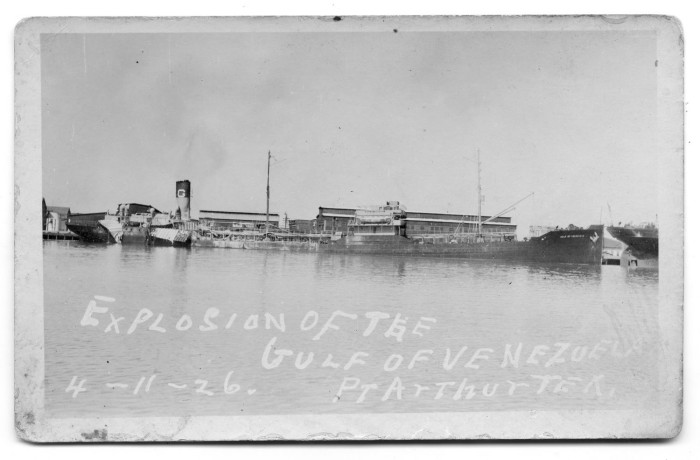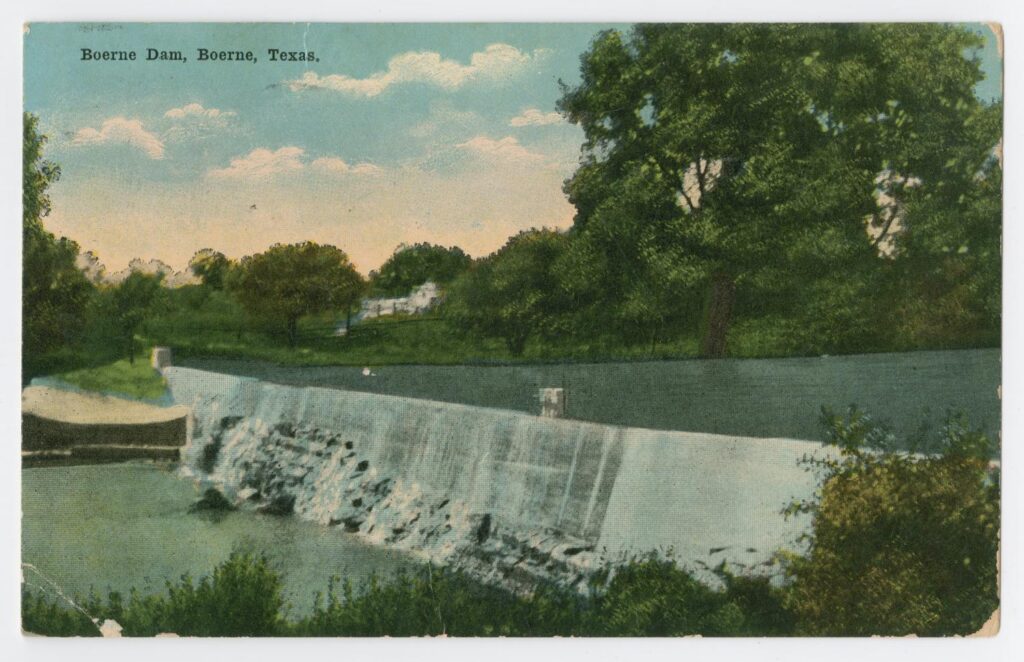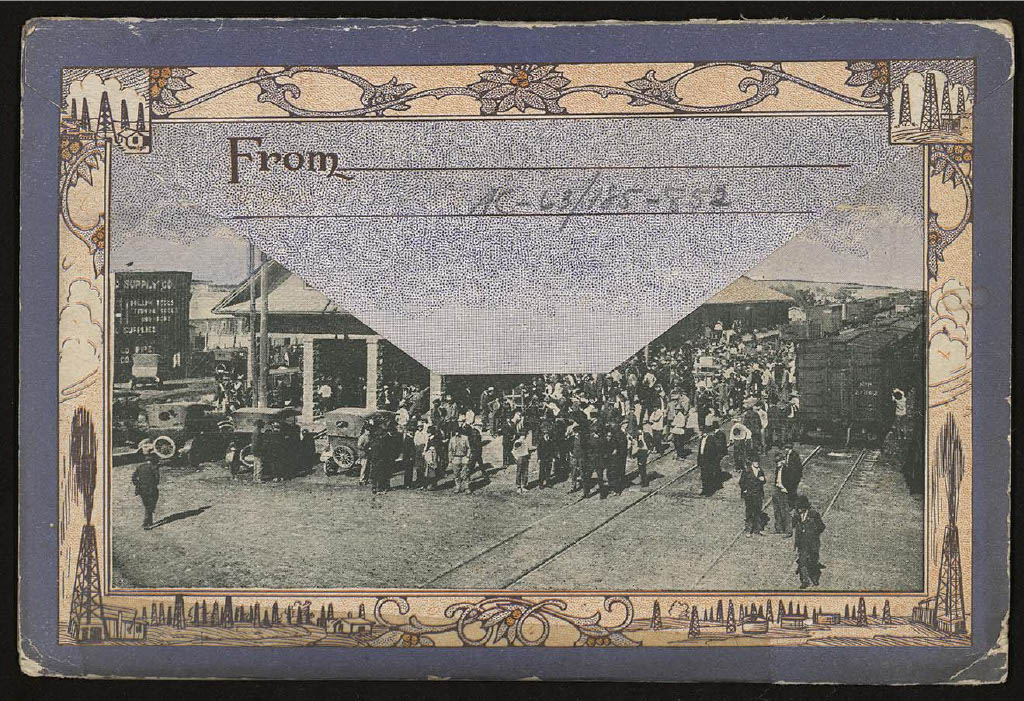Postcards: Showing Civil engineering projects through history
Author: Melinda Luna PE
November 2023

Postcards were first used in Texas in the early 1900’s. The rate to send a postcard was 2 cents (now would be 62 cents). There were postcards used in other parts of the world as early as the 1840s. In Texas, there were various subjects for the postcards, but several subjects included: bridges, city skylines, Oil wells, universities, buildings, maps, roads, seawalls, ports, airports, courthouses, parks, railroads, dams, canals, water towers, other landmarks, some events related to civil engineering included the New London explosion, and even the aftermath of floods, hurricanes and other disasters.
These postcards were a way to send notes to people far away and show information via a drawing or photographs. They were souvenirs and advertisements for others to show where they lived or attract people to move to the area advertised. A way to show progress in the form of advertising a new bridge, or roadway to make it easier to travel in the area. Dams to show that flood control was being made possible to stop flood waters and prevent loss of life and property and in some cases the dam providing electricity.

Some of the postcards are the only documentation of bridges that once existed that have either been replaced taken out of service or destroyed. One of the more unique groups is the footbridges. While they were the first bridges built to provide an all-weather crossing for pedestrians few bridges exist today that are solely for pedestrians. Most footbridges today exist as design features for parks and some are showpieces. In the case of postcards, the postcards of footbridges are reminders and documentation of a time when bridges existed to help people cross a river and stream and not there to carry vehicular traffic. Most vehicular or multipurpose bridges on postcards showed the bridge as a symbol of the city it was located. In the City of Austin for example this was the Congress Avenue Bridge. This bridge was shown in drawings, graphics that exhibited the bats in the area, and photographs showing the same.
Some of the more unique postcards are those of a city’s skyline and over time how the skyline has changed. For example, the addition of the Tower of the Americas in San Antonio included a civil engineering landmark that would be very easy to identify. Postcards of skylines can be found in most of the major cities.
The more unusual postcards on civil engineering subjects of disasters such as the New London explosion, the Texas City explosion, the 1900 & 1915 Galveston hurricane, and the 1921 flood in San Antonio among others. While a little gruesome, it may have been a way to remember what happened to be the catalyst of change.
Some libraries have digitized the postcards and offer them online as a source of historical information. Others collect postcards as a hobby focusing on a subject or an area. Regardless, postcards have become a way that civil engineering history has been preserved. If you have a digitized collection especially unique ones, free to send links so it can be shared with others.




